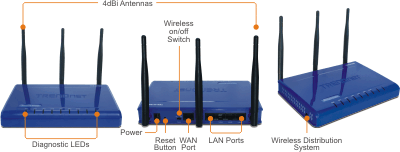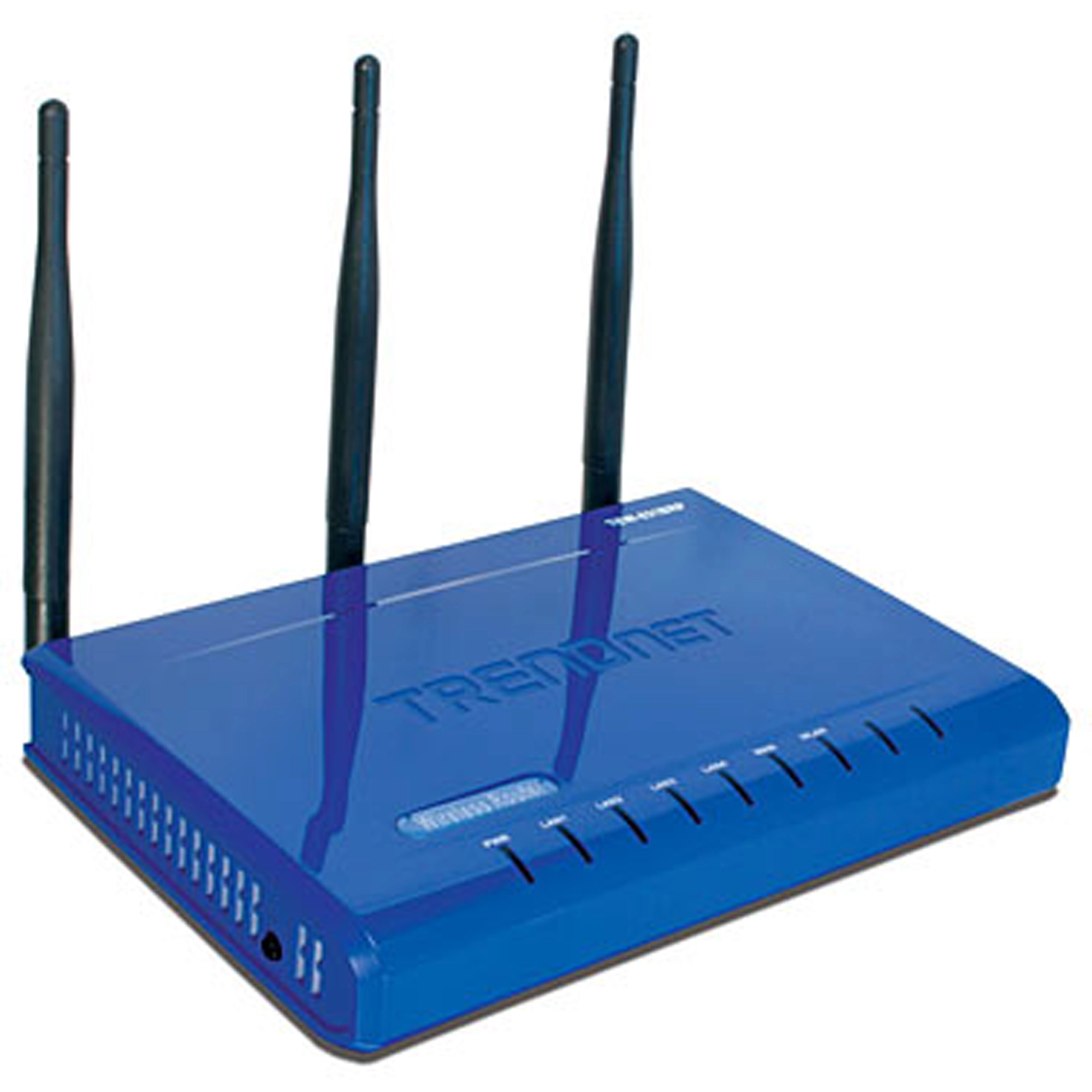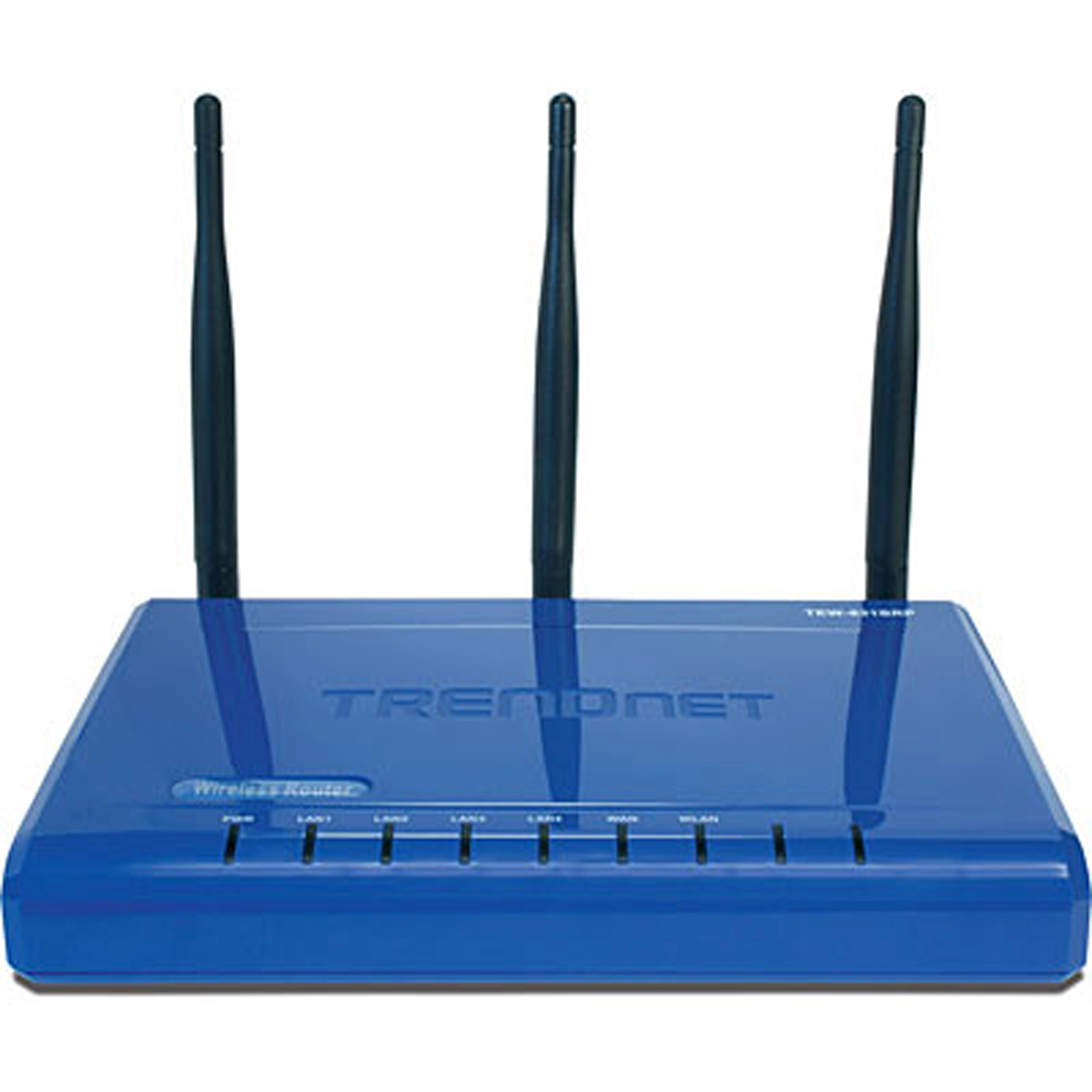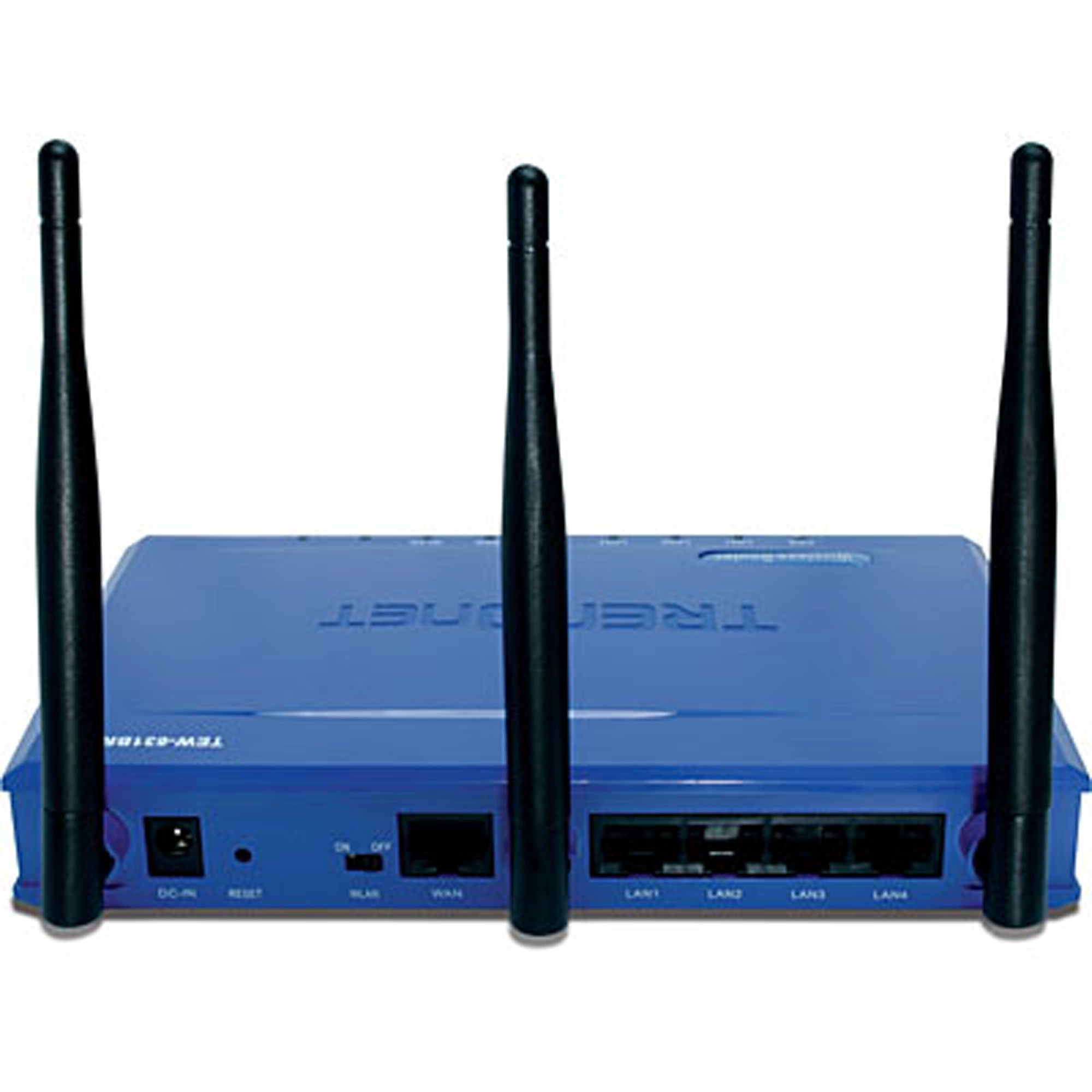Aktualisieren Sie die Firmware von TRENDnet-Produkten NICHT über eine drahtlose Verbindung.
Wenn die Firmware über eine drahtlose Verbindung aktualisiert wird, kann das Produkt Schaden nehmen. Führen Sie Aktualisierungen deshalb bitte nur über verdrahtete Verbindungen durch. |
Note:
For units that have v1.0.1.5 firmware, please upgrade to f/w v1.0.2.2 first then v1.0.3.0 or newer.
Firmware Version: v1.0.2.2
Release Date: 6/2007
Dateiname: Firmware_TEW-631BRP(v1.0.2.2).zip
Datum: 1/27/2012
Dateigröße: 1.11 MB
Aktualisieren Sie die Firmware von TRENDnet-Produkten NICHT über eine drahtlose Verbindung.
Wenn die Firmware über eine drahtlose Verbindung aktualisiert wird, kann das Produkt Schaden nehmen. Führen Sie Aktualisierungen deshalb bitte nur über verdrahtete Verbindungen durch. |
Firmware Version: v1.0.4.0
Release Date: 6/2009
Note:
1. Filter out 802.1X packets from Ethernet LAN port to avoid 802.1X blocking Ethernet LAN port.
Dateiname: FW_TEW-631BRPV2V3(v1.0.4.0).zip
SHA-1 Checksum: 67A1500814CBC65112DEDAA9B30E74027D35351A
Datum: 7/26/2017
Dateigröße: 2.72 MB
Aktualisieren Sie die Firmware von TRENDnet-Produkten NICHT über eine drahtlose Verbindung.
Wenn die Firmware über eine drahtlose Verbindung aktualisiert wird, kann das Produkt Schaden nehmen. Führen Sie Aktualisierungen deshalb bitte nur über verdrahtete Verbindungen durch. |
Probleme bei der Aktualisierung der Firmware können das Gerät dauerhaft beschädigen oder seine Funktionsfähigkeit erheblich einschränken. Lesen Sie bitte die „Hinweise zur neuen Firmware“ auf unserer Website. Laden Sie die neue Firmware bitte nicht herunter, wenn Sie dort keine Lösung für Ihr konkretes Problem finden. |
Firmware: TEW-631BRPv2v3_v1.0.3.5
Release Date:2007/10/31
Release Note 1. Set the debouncer time to 5 seconds.
2. Add blinking WPS led after press WPS button until the time expire to inform user the WPS is ready to run.
Dateiname: Firmware_TEW-631BRPv2v3.zip
SHA-1 Checksum: E4FFDD0DA8ACE133A6F3D6CD3999CA77FD574F9A
Datum: 7/26/2017
Dateigröße: 2.33 MB
Dateiname: EN_Spec_TEW-631BRP(V3.0).pdf
Datum: 6/27/2012
Dateigröße: 1.56 MB
Dateiname: FR_Spec_TEW-631BRP(V3.0).pdf
Datum: 6/27/2012
Dateigröße: 1.64 MB
Dateiname: GE_Spec_TEW-631BRP(V3.0).pdf
Datum: 6/27/2012
Dateigröße: 1.57 MB
Dateiname: SP_Spec_TEW-631BRP(V3.0).pdf
Datum: 6/27/2012
Dateigröße: 1.59 MB
Dateiname: RU_Spec_TEW-631BRP(V3.0).pdf
Datum: 6/27/2012
Dateigröße: 1.53 MB
Dateiname: EN_QIG_TEW-631BRP(V3.0R).pdf
Datum: 1/24/2008
Dateigröße: 506.00 KB
Dateiname: FR_QIG_TEW-631BRP(V3.0R).pdf
Datum: 1/24/2008
Dateigröße: 506.54 KB
Dateiname: GE_QIG_TEW-631BRP(V3.0R).pdf
Datum: 1/24/2008
Dateigröße: 505.65 KB
Dateiname: SP_QIG_TEW-631BRP(V3.0R).pdf
Datum: 1/24/2008
Dateigröße: 507.24 KB
Dateiname: RU_QIG_TEW-631BRP(V3.0R).pdf
Datum: 1/24/2008
Dateigröße: 569.15 KB
Dateiname: EST_QIG_TEW-631BRP(V3.0R).pdf
Datum: 1/24/2008
Dateigröße: 498.65 KB
Dateiname: Latvian_QIG_TEW-631BRP(V3.0R).pdf
Datum: 5/16/2013
Dateigröße: 2.15 MB
Dateiname: UG_TEW-631BRP(v3.0R).pdf
Datum: 11/20/2007
Dateigröße: 3.84 MB
JPEG Image
Dateigröße: : 329.08 KB
Datum: : 11/28/2007
JPEG Image
Dateigröße: : 295.06 KB
Datum: : 11/28/2007
JPEG Image
Dateigröße: : 303.67 KB
Datum: : 11/28/2007
TIFF Image
Dateigröße: : 2.91 MB
Datum: : 11/28/2007
TIFF Image
Dateigröße: : 7.86 MB
Datum: : 11/28/2007
TIFF Image
Dateigröße: : 3.01 MB
Datum: : 11/28/2007
When using WDS links the TEW-631BRP will fall back to 802.11g mode.
Make sure that you are using Internet Explorer and not an
unsupported browser like Fire Fox.
...
First make sure you have the router physically connected
properly. Connect the DSL modem via Ethernet to the WAN port of the
TEW-631BRP. If you have any computers that need to be hard wired into the
router you will connect them to one of the four LAN ports.
Make sure the connection from...
Well Known Ports
1) Log into the router by entering its IP address into a browser. The default IP address is https://192.168.10.1. At the login, enter your username (admin) and password (blank).
2)Click on "Advanced" on the left hand side then click on "Virtual Server".
3)Click the "En...
Step 1 Log into the router by entering its IP address
into a browser. The default IP address is https://192.168.1.1.
At the login, enter your username (admin) and password (blank).
Step 2 Click "Status" on the left hand side
then click on "Device Information".
...
Step 1 Log into the router by entering its IP address
into a browser. The default IP address is https://192.168.1.1.
At the login, enter your username (admin) and password (blank).
Step 2 Click on "Basic" on the left hand side
then click on "Wireless".
Step 3 Enter in the...
Log into the router by entering its IP address
into a browser. The default IP address is https://192.168.1.1.
At the login, enter your username (admin) and password (blank).
...
Step 1 Log into the router by entering its IP address
into a browser. The default IP address is https://192.168.1.1.
At the login, enter your username (admin) and password (blank).
Step 2 Click "Basic" on the left hand side then
click on "Network Settings".
Step 3 Enter i...
The default IP address is https://192.168.1.1.
The default username is (admin) and the default password is (admin).
...
Step 1 Log into the router by entering its IP address
into a browser. The default IP address is https://192.168.1.1.
At the login, enter your username (admin) and password (blank).
Step 2 Click "Tools" on the left hand side
then click on "Firmware".
Step 3 Click on "Brows...
Step 1 Log into the router by entering its IP address
into a browser. The default IP address is https://192.168.1.1.
At the login, enter your username (admin) and password (blank).
Step 2 Click "Tools" on the left hand side
then click on "System".
...
Press and hold in the reset button on the back of the router
for approximately 15 seconds while the power is on.
...
Step 1 Log into the router by entering its IP address
into a browser. The default IP address is https://192.168.1.1.
The default username is "admin" with a password of (blank).
Step 2 Click "Tools" on the left hand side
then click on "Admin".
Step 3 Input the new password and verify. Then ...
| Drahtlose Verbindung |
| Standards | Verdrahtet: IEEE 802.3 (10Base-T), IEEE 802.3u (100Base-TX)
Drahtlos: IEEE 802.11b, IEEE 802.11g, IEEE 802.11n (Draft 2.0), IEEE 802.11e QoS |
|---|
| WAN | 1 x 10/100 MBit/s Auto-MDIX-Port (Internet) |
|---|
| LAN | 4 x 10/100 MBit/s Auto-MDIX-Port |
|---|
| Schieberegler | Ein-/Ausschalten des Wireless LAN |
|---|
| WPS-Taste | WPS-Konfiguration |
|---|
| Verbindungsart | Dynamische IP, Statische (Feste) IP, PPPoE, PPTP, L2TP, BigPond |
|---|
| NAT Firewall | 4.000~6.000 konfigurierbare NAT-Einträge; beschränktes NAPT
IP-Bereiche, Port-Bereiche & -Zeitpläne
vordefinierte Konfigurationen für Game Hosting
Port-Triggering für 24 spezielle Anwendungen
ALG-Support: RTP/RTSP, AOL, FTP, ICMP, WMP/MMS, NetMeeting, SIP |
|---|
| SPI-Firewall | Bis zu 24 Regeln
Schutz gegen Cyber-Angriffe – auf mehr als 2.000 Angriffe überprüft
|
|---|
| WDS | Activation/désactivation du support WDS (Wireless Distribution System) |
|---|
| UPnP | UPnP-IGD-1.0 kompatibel |
|---|
| DMZ | DMZ-Host, 24 konfigurierbare virtuelle Server & Game-Server |
|---|
| DNS | Statische oder im WAN zugewiesene DNS-Server
10 überprüfte Dienste für DDNS |
|---|
| Internet-Zugriffskontrolle | Internet-Zugriffskontrolle Regelbasierte Kindersicherungen, zeitbasierter Internetzugriff, Portbereich/Service-Filterung,
Dynamische URL-Filterung, Beschränkung von Internet-Domänen, 32 benutzerdefinierte Zeitpläne, 24 Einträge für
MAC-Adressenfilter |
|---|
| Protokollierung | 3 Arten & 3 Stufen der Ereignisprotokollierung, bis zu 1000 Einträge
Protokollierung von E-Mail-Benachrichtigungen nach Zeitplan oder Füllungsgrad des Log-Bereichs |
|---|
| LED-Anzeige | Stromversorgung, LAN 1-4, WAN, WLAN |
|---|
| Netzteil | Externes Netzteil (12 V Gleichstrom, 1 A) |
|---|
| Stromverbrauch | 779mA |
|---|
| Abmessungen (L x B x H) | 180 x 122 x 30 mm |
|---|
| Gewicht | 350 g |
|---|
| Temperatur | Betrieb: 0 °C bis 40 °C
Lagerung: -20 °C bis 60 °C |
|---|
| Luftfeuchtigkeit | max. 90 % (nicht kondensierend) |
|---|
| Elektromagnetische Verträglichkeit | CE, FCC |
|---|
| Drahtlose Verbindung |
Frequenz | 2,412 - 2,462 GHz (FCC)
2,412 - 2,472 GHz (ETSI) |
|---|
Antenne | 3 feste 4dBi-Dipolantennen |
|---|
Medienzugriffsprotokoll | CSMA/CA mit ACK |
|---|
Datenrate | - 11 MBit/s, 5,5 MBit/s, 2 MBit/s, 1 MBit/s
- 802.11g: 54 MBit/s, 48 MBit/s, 36 MBit/s, 24 MBit/s, 18 MBit/s, 12 MBit/s, 9 MBit/s und 6 MBit/s
- 802.11n (draft 2.0): bis zu 300 MBit/s
|
|---|
| Sicherheit | 802.1X/EAP: EAP-TLE,EAP-TTLE/MSCHAPv2, PEAPv0/EAP-MSCHAPv2, PEAPv1/EAP-GTC
WPA: WPA/WPA2, WPA-PSK/WPA2-PSK (AES-11b/g/n, TKIP-11b/g)
WPS: Unterstützung für PIN-Einstellung und Konfiguration über Drucktasten
SSID-Broadcaststeuerung |
|---|
| Ausgangsleistung | 802.11b: 18 dBm (normal)
802.11g: 15 dBm (normal)
802.11n (Draft): 7 dBm (normal) mit HT20 oder HT40 |
|---|
Empfangsempfindlichkeit | 802.11b: -86 dBm (normal) bei 11 MBit/s
802.11g: -74 dBm (normal) bei 54 MBit/s
802.11n (Draft): -70 dBm (normal) mit HT20 oder HT40 |
|---|
Kanäle | 1 - 11 (USA), 1 - 13 (EU) |
|---|

PACKUNGSINHALT |
- TEW-631BRP
- Mehrsprachige Installationsanleitung
- Installations-CD „Easy-Go“
- Netzteil (12 V DC, 1 A)
- RJ-45-Kabel (1,5 m)
|
Alle erwähnten Geschwindigkeiten dienen ausschließlich dem Vergleich. Produktspezifikationen, Größe und Form unterliegen unangekündigten Änderungen, und das tatsächliche Aussehen des Produkts kann von dieser Beschreibung abweichen.











